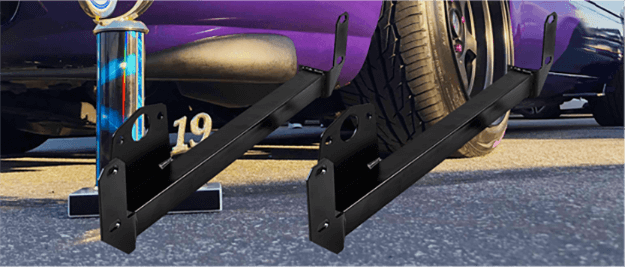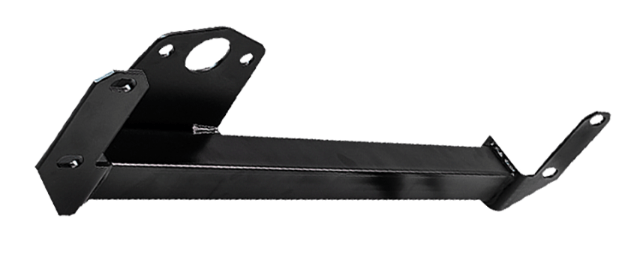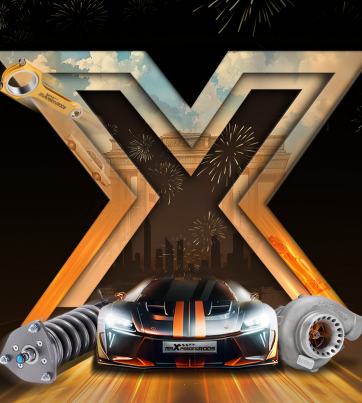Buying a steering gearbox for your car can sometimes be a daunting and confusing task. At maxpeedingrods.com, it is our mission to make that task as an easy and painless as possible. This Buyer's Guide is designed to answer any questions you may have during your search for the right steering gearbox for your car, and how to buy steering gearbox on our website.
What is a steering gearbox?
The steering gearbox contains the gears that transmit the driver's steering inputs to the steering
linkage that turns the wheels, and it multiplies the driver's steering changes so that the front wheels
move more than the steering wheel.
Most car-based vehicles use rack-and-pinion steering in which the steering wheel turns a pinion gear
that moves on a rack to turn the front wheels. Others use recirculating ball systems in which ball
bearings are mounted on a “worm”-type steering gear.
Though steering gears often last for the life of a vehicle, the gearbox can develop leaks or the gearbox
case can crack. Among the signs that a steering gearbox needs repair or replacement are increased or
jerky steering effort, and the steering becoming loose and showing excessive play.
What are the functions of steering gearbox?
A steering gearbox is a very important part of the steering system in the vehicles this part is found in. The function of a gearbox is to transfer the rotational input from the steering wheel into the directional movement of the wheels. The gearboxes input shaft attaches to the steering column; the box transfers the inputs of the driver into the gears which then react to move the tires in the desired direction. With the advancements in automotive technology, a steering gearbox is not needed in many modern vehicles but the part is found in many older cars and larger, heavy-duty trucks. A gearbox was traditionally used in situations where the weight of the vehicle was too much for a rack and pinion to handle.
How to pick the right steering gearbox?
You won't be able to control your vehicle if you've got a shot steering gearbox, so you'd better have it replaced ASAP. Even though your car's steering system is one of the most important components of your vehicle, very few people actually understand how it works, and that goes double for the steering gearbox itself. This particular component is available in different forms, but would generally work the same way. Go through our short guide so you could easily decide on what steering gearbox you should buy.
Types of Steering GearboxesTwo of the most common types of manual steering gearboxes found in vehicles would be the "rack and pinion" and "worm gear" gearboxes. Both work the same way by using gears to transfer the rotation of the steering wheel into motion for the two front wheels as you steer left and right. Rack and pinion systems are much simpler designs and have been used in automobiles ever since. The worm gear or worm drive mechanism operates in a similar way but have the unique advantage of being built from tougher components. If you're driving a newer car, it'll probably have power steering. It works by using a small hydraulic pump that builds up fluid pressure that is used to help turn the car's front wheels. We highly recommend that you go through your vehicle's manual and see what type of gearbox your car uses so you could purchase a proper replacement. You would want to stick with what your vehicle has, whether it's rack and pinion or a worm gear, but adding power steering is also advisable should you want to upgrade.
Always Get an OEM ReplacementGearboxes are typically made from very sturdy materials, and it takes a long time for one to wear out. That's why we advise you to always go for an exact OEM replacement of your stock gearbox, since these will be made according to the particular specifications of your vehicle's make and model. Unless you're participating in motorsports or local racing events, then you would not need to get higher end models when it comes to aftermarket steering gearboxes. Standard models can go for as low as $100, but it will go as high as $1500 for top-of-the-line designs.
Go For High-Quality and DurabilityIn the end, what matters most is that you get a compatible aftermarket steering gearbox from a brand that is known for making highly durable parts. Regular folks wouldn't need to get a highly customized steering gearbox, they'll just need a replacement that'll allow them to steer properly over at normal highway speeds. Racing equipment is an entirely different matter, but for most people, a standard steering gearbox would do.
Why buy steering gearbox at MaXpeedingRods?
MaXpeedingRods has been engaged in the research of overseas racing products and culture for
decades. If you are looking for steering gearboxs, you have landed at the right place. On the
basis of your vehicle make and model, you can choose from a plethora of automotive maintenance
and accessories. MaXpeedingRods offers a seamless online shopping experience and the streamlined
e-commerce interface makes it easy for you to find just the steering gearbox you want.
MaXpeedingRods offers a variety of steering gearboxs with high quality.
• 100% brand new in box
• Made by high strength steel and durable Powder-Coated Finish
• Improved suspension geometry to reduce bump steer
• Improves Rear Suspension, Handling, Predictable Response and even Prevents Premature Tire
Wearing
• Design for Street, Track or Drift Racing Precise Adjustments with Long Service Life
• Perfect for track cars, drift control, street course, off road
• Direct bolt-on for OE factory or replacement
• Professional Installer is Highly Recommended (No Instruction Included)
• Alignment Highly Recommended After Install

What are the signs and symptoms of a bad steering gearbox?
When your steering gearbox starts to fail, you may notice one or all of the following things. Keep in mind, a failing power steering box is a critical safety issue; the inability to maneuver your car along the road isn't just a convenience issue. It can potentially cause serious accidents, injury or even death. Here are the warning signs of a failing power steering gearbox:
Steering wheel has trouble turning.If you go to make a routine turn and it takes a strong effort to turn the wheel, the steering gearbox may be completely worn out. Have a professional mechanic examine your gear box as soon as possible.
Leaking fluid.Power steering fluid in and around the gearbox is another sign of potential failure. You should have your steering gearbox replaced or repaired immediately.
Car "pulls" to one side when driving.If your car wants to pull right or left, it might not be the alignment - your steering gear box may be shot. Alignment is a common cause of pulling, but the steering gearbox can also be a primary reason, too.
Bounce after bumps.Steering is about control, not just direction. Whenever the steering gear box isn't working, your car may experience additional bouncing after potholes, speed bumps and other minor road hazards. If your shocks and struts are fine and your car is bouncing, have the power steering gearbox examined for deficiencies.
Moving steering wheel.Pay attention to your steering wheel when traveling at higher speeds. If the wheel vibrates up and down during regular travel or when applying the brake, that's a telltale sign of a bad power steering gear box.

How to replace your steering gearbox?
It's risky to drive a vehicle with a broken steering gearbox, you won't have full control of your vehicle should it fail entirely. It's a good thing that it's easy enough to replace it one on your own, so you won't need to head over to a mechanic and shell out for a hefty repair fee. All you'll need would be a couple of basic tools and about an hour of your time in order to get the job done.
Difficulty Level: Advanced Tools that you'll need
• Ratchet and socket set
• Flat-head screwdriver
• Needle-nose pliers
Step 1: Begin by parking your vehicle on a level surface with the wheels pointed straight ahead.
Step 2: Lift your vehicle up using a jack and secure it in place with a couple of jack stands.
Step 3: Take a look at your steering column and find the point where it attaches to the input shaft
on the steering gearbox itself. You should find a round pinch clamp that's secured by a bolt on it.
You should loosen that bolt and spread the clamp open with a screwdriver so you could remove
the clamp off from the input shaft. If your vehicle has a different method of removing this part,
then it's best to check it's manual for specific instructions.
Step 4: You should then get under the vehicle and locate where the steering linkage connects to
the pitman arm on the steering gearbox. It should be held in place with a nut so you'll have
to loosen that so you could remove the pitman arm from its place.
Step 5: Once you've removed the pitman arm, you should be able to access the gearbox and unbolt
it from its frame. Be careful as you're working with heavy parts that could potentially drop on you
and cause injuries.
Step 6: You should then install your replacement steering gearbox into place. Make sure that you
place everything back in reverse order and perform some tests on your vehicle's steering before you
wrap up.







